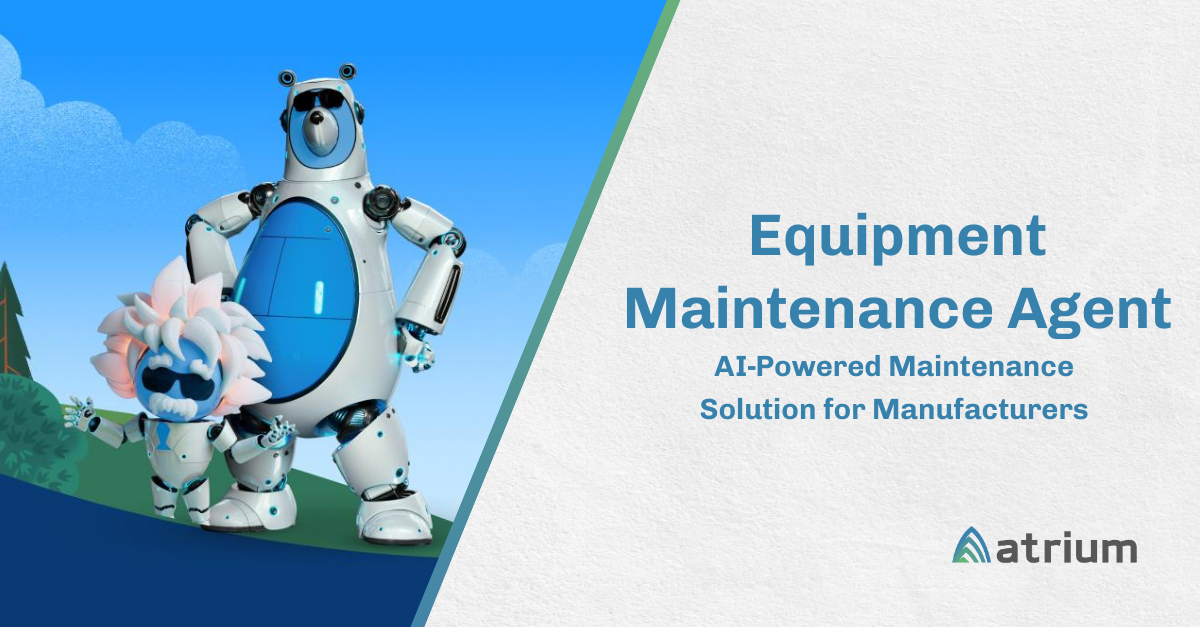Most manufacturing companies are in need of more proactive, cost-effective ways of maintaining operational efficiency. Downtime caused by unexpected equipment failures can result in significant financial losses, decreased productivity, and disrupted supply chains — to name a few challenges.
To combat this, more companies have been turning to AI-powered predictive maintenance in manufacturing. A few examples include vibration analysis in machinery like bearings (i.e., indicating wear and tear), oil analysis for engines (i.e., detecting abnormalities such as contamination), monitoring electric motor health (i.e., predicting when a motor might fail before it can disrupt production)… and so on.
Let’s dig into how AI is transforming the manufacturing industry with a different approach to parts maintenance, enhancing operational efficiency and reducing unplanned downtime in the process.
The traditional approach to maintenance in the manufacturing industry
Historically, manufacturing companies have relied on two primary maintenance strategies: reactive maintenance and preventative maintenance.
Reactive maintenance
This is a “fix-it-when-it-breaks” approach, where equipment is repaired or replaced only after a failure occurs. While this method is the least costly upfront, it results in unplanned downtime and increased repair costs.
Preventative maintenance
With a preventative approach, maintenance tasks are scheduled at regular intervals, such as monthly or annually, regardless of the equipment’s actual condition. While this strategy helps reduce the risk of unexpected breakdowns, it can be inefficient or add unnecessary costs, as parts are sometimes replaced before they reach the end of their useful life.
The emergence of predictive maintenance in manufacturing
Predictive parts maintenance represents a larger paradigm shift in the manufacturing industry. It leverages advanced AI technologies to monitor equipment and predict when specific parts or components are likely to fail. By doing so, manufacturing companies can schedule maintenance precisely when it’s needed, reducing costs, minimizing downtime, and ensuring that parts are replaced only when necessary.
The evolving role of AI in predictive parts maintenance
Today, AI plays a key role in making predictive parts maintenance a reality for manufacturing companies. Here are just a few ways AI is changing the market:
Data collection and analysis
AI-driven sensors and devices collect vast amounts of real-time data from manufacturing equipment. Think temperature, pressure, vibration, and other relevant information. Algorithms analyze this data to identify patterns and anomalies that may indicate potential part failure.
Machine learning models
Moreover, AI employs machine learning models to predict equipment failures. These models use historical data, performance trends, and sensor information to make informed predictions about when specific parts might need maintenance.
Early warning systems
AI can issue early warnings about potential problems. By identifying subtle changes in equipment behavior (e.g., increased vibrations or abnormal temperature fluctuations), maintenance teams can know to take action before a breakdown occurs.
Condition-based maintenance
Instead of relying on a fixed maintenance schedule, maintenance is triggered by specific conditions and indicators detected by AI systems. This can save on unnecessary repairs and help ensure manufacturers maximize the value of existing parts.
Optimizing spare parts inventory
Predictive maintenance can help manufacturers optimize their spare parts inventory. By accurately predicting when parts will fail, companies can keep the right parts in stock and reduce carrying costs.
Challenges and considerations for manufacturers when it comes to leveraging AI for predictive parts maintenance
It doesn’t all happen overnight, especially where data scale, security, and the adoption of new technology are concerned. While predictive maintenance in manufacturing presents significant advantages, there are considerations worth addressing with a partner who can put AI in the context of the business for you.
Data quality
AI systems rely on high-quality data to make accurate predictions. Therefore, it’s necessary for manufacturing companies to ensure data accuracy and consistency in order to maximize the effectiveness of their predictive maintenance programs. This data quality control is easier said than done for many businesses, and essential when embarking on an AI journey for maintenance purposes.
Integration
Integrating AI solutions into existing manufacturing processes can be complicated. You may need to invest in the necessary infrastructure and provide training for employees to ensure not just a successful implementation, but also long-term success and the ability to handle updates.
Security
When dealing with massive amounts of data, and disparate data at that, security is a natural concern. You want to make sure you and your customers’ sensitive data is protected, and knowing how to maintain high standards of cybersecurity while reaping the benefits of automation and speed are key.
Cost of implementation
While predictive maintenance ultimately saves costs, there’s usually an investment required for the implementation of AI-powered systems. Whether you’re moving away from legacy systems, incorporating new technologies, or integrating the two, the time, team, and technology associated with such changes can add up.
Next steps as you consider investing in AI
AI-powered predictive parts maintenance is a logical step for manufacturing companies looking to increase efficiencies and cost savings in the long term. But deciding on, implementing, and going live with the right solutions requires a partner that not only understands preventative maintenance, but also knows the ins and outs of your industry and the changing market.
At Atrium, our team has expertise in helping manufacturers make the move to AI-powered solutions specifically for predictive parts maintenance. We can help you tackle your unique use cases and get ahead of AI trends to achieve measurable outcomes for the business.
Learn more about our AI and data science services and how we help companies like yours.



